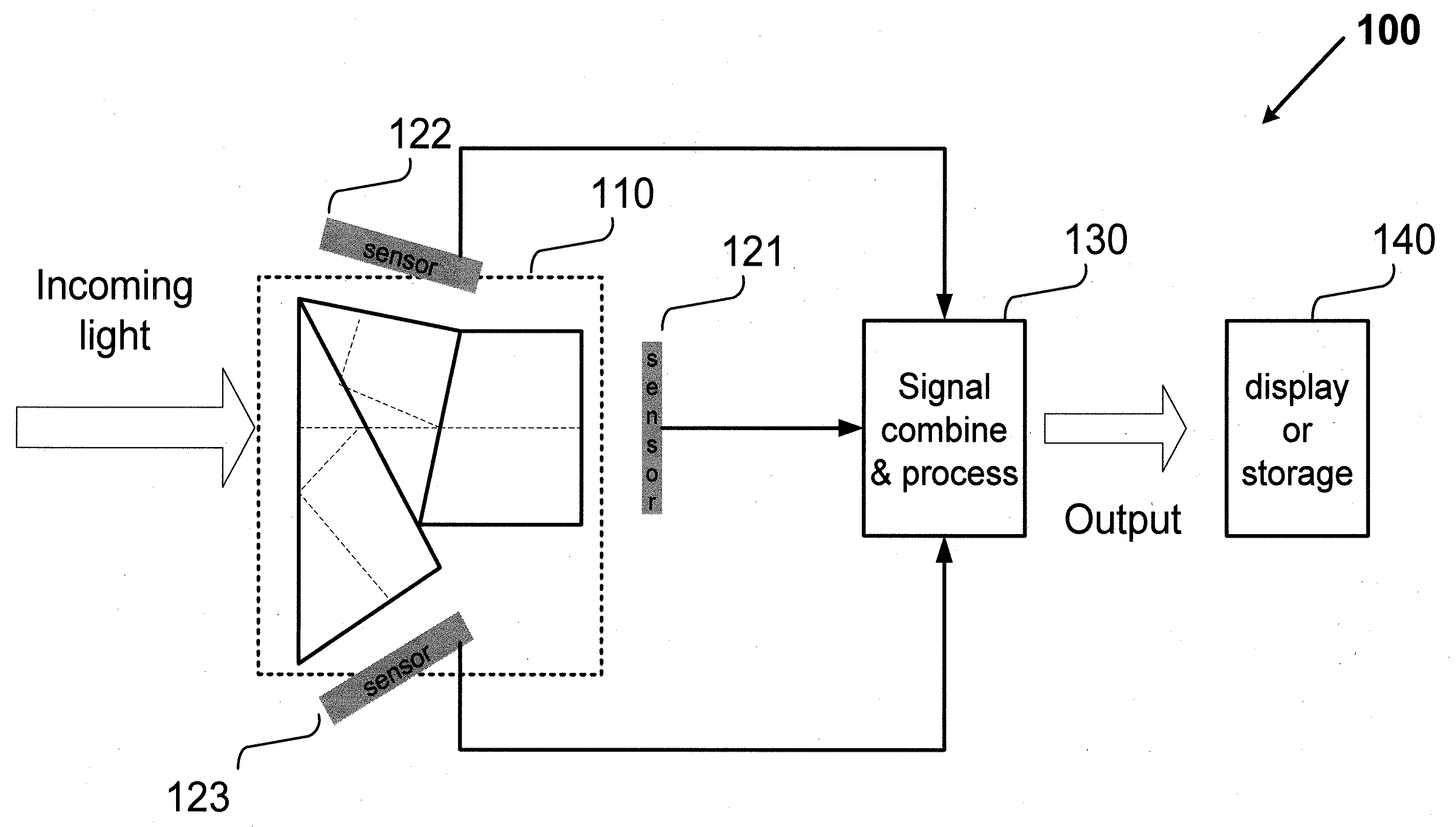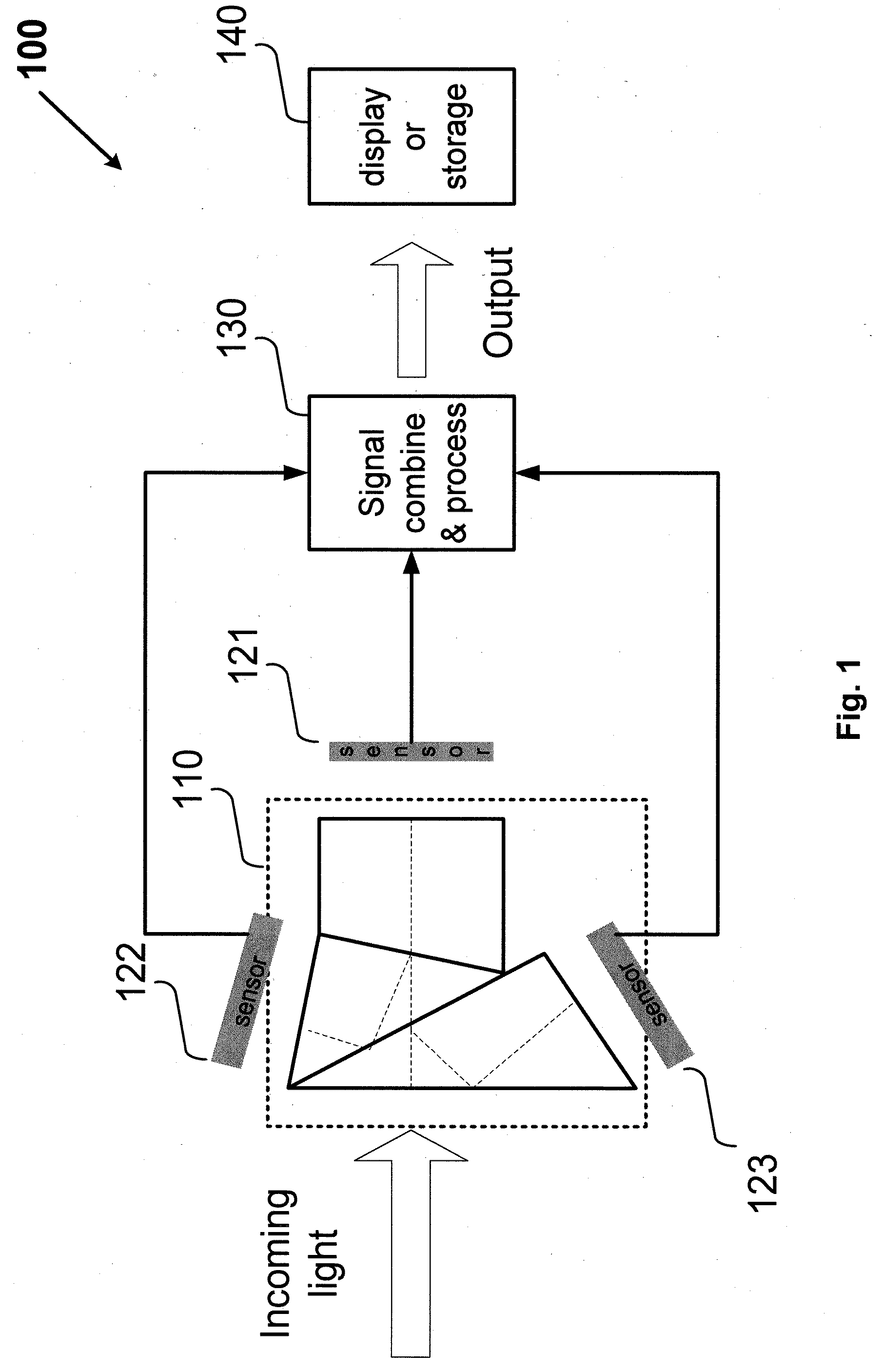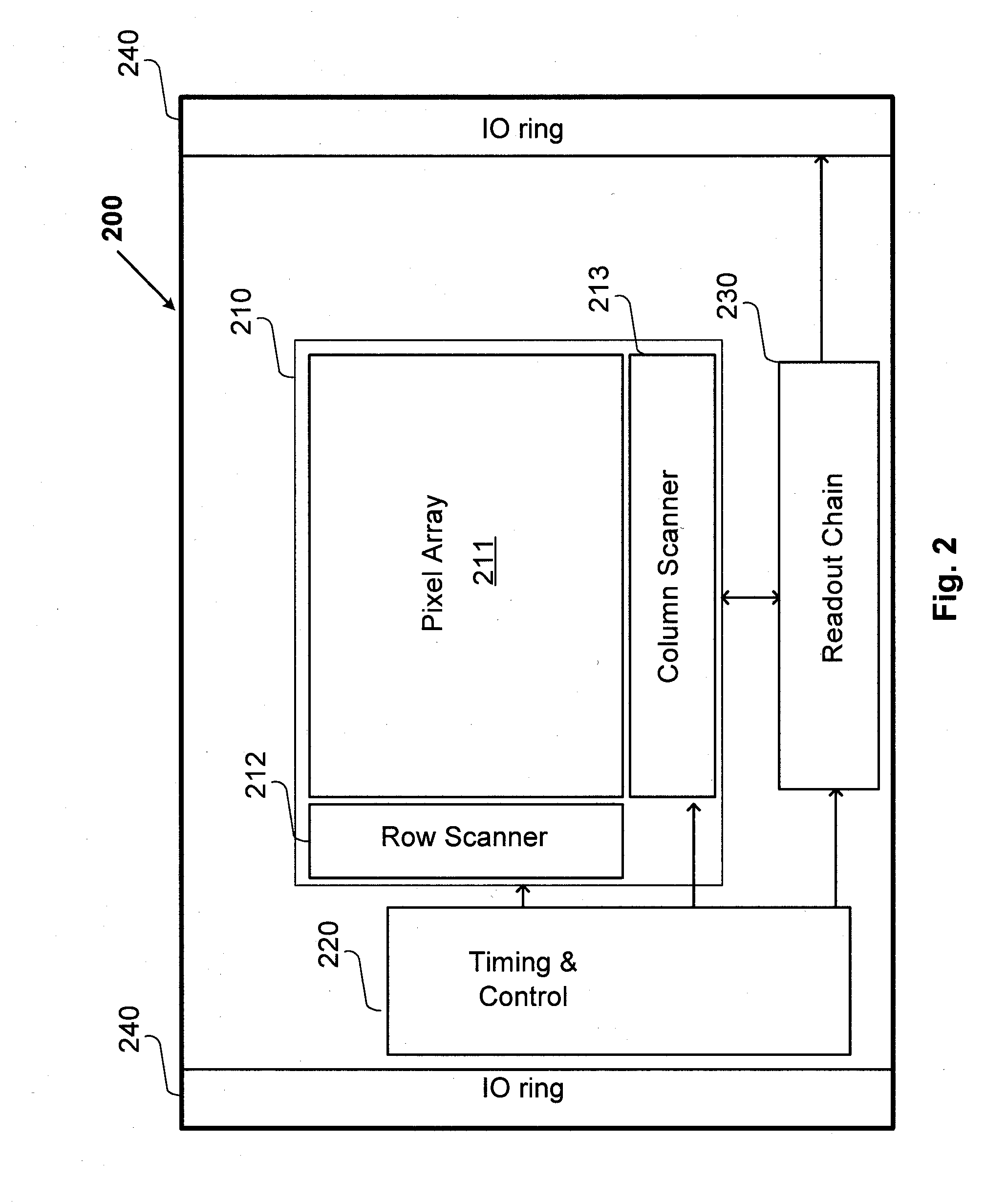Camera system with multiple pixel arrays on a chip
a camera system and chip technology, applied in the field of optical camera systems, can solve problems such as large chips, and achieve the effects of compact design, reduced power consumption, and easy fabrication
- Summary
- Abstract
- Description
- Claims
- Application Information
AI Technical Summary
Benefits of technology
Problems solved by technology
Method used
Image
Examples
Embodiment Construction
[0022]The present invention provides a camera system having multiple pixel arrays on a semiconductor substrate (“on the chip”). FIG. 1 shows conventional camera system 100, having multiple image sensor chips. As shown in FIG. 1, camera system 100 includes optical system 110, multiple image sensor IC chips 121, 122, and 123, signal processing circuit 130, and display or storage element 140. Optical system 110, typically including lenses and beam splitters, forms multiple images from the incoming light. Multiple light sensing chips 121, 122, and 123 are aligned to the locations of these multiple images within the focus depth and convert the light sensed into electrical signals, in either analog or digital domain. Signal processing circuit 130 then combines the output signals from multiple image sensors 121, 122, and 123 for further processing. The output signals from signal processing circuit 130 are sent to display or storage element 140 for storage or display.
[0023]In camera system ...
PUM
 Login to View More
Login to View More Abstract
Description
Claims
Application Information
 Login to View More
Login to View More - R&D
- Intellectual Property
- Life Sciences
- Materials
- Tech Scout
- Unparalleled Data Quality
- Higher Quality Content
- 60% Fewer Hallucinations
Browse by: Latest US Patents, China's latest patents, Technical Efficacy Thesaurus, Application Domain, Technology Topic, Popular Technical Reports.
© 2025 PatSnap. All rights reserved.Legal|Privacy policy|Modern Slavery Act Transparency Statement|Sitemap|About US| Contact US: help@patsnap.com



